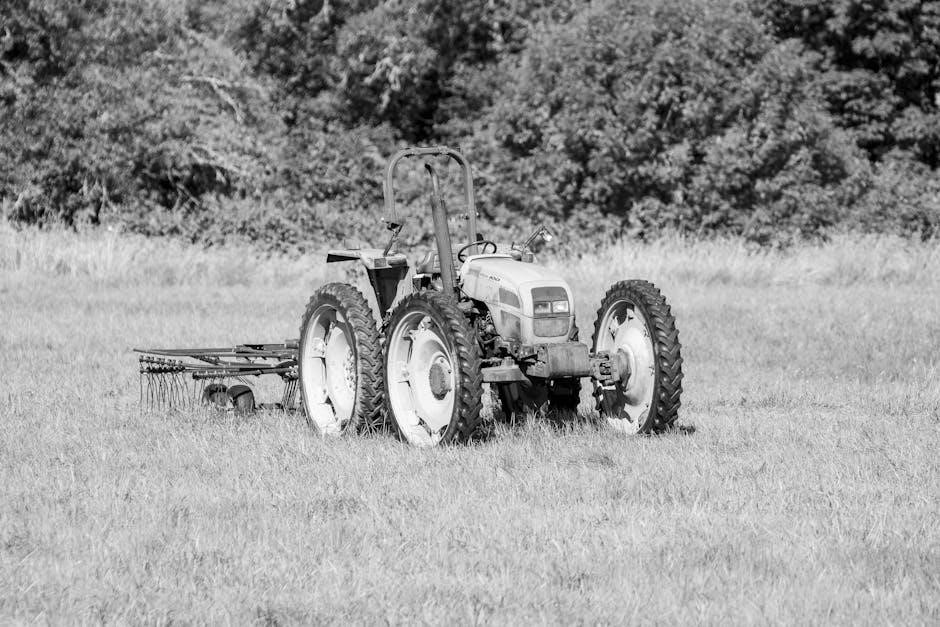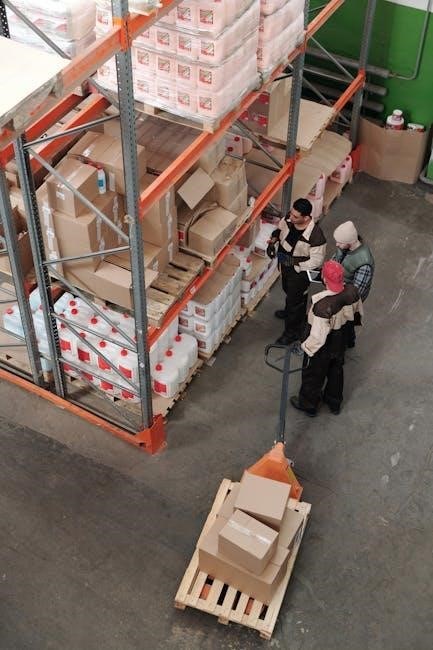stormwater management manual for western washington
Stormwater management in Western Washington is crucial for protecting water quality and ecosystems․ The Stormwater Management Manual provides guidelines for managing runoff effectively, ensuring compliance with regulations like the 2024 Municipal Stormwater General Permits․ It emphasizes the use of tools like the USEPA Storm Water Management Model (SWMM) and Low Impact Development (LID) techniques to mitigate stormwater impacts․
Overview of Stormwater Management
Stormwater management involves controlling and directing rainfall runoff to prevent flooding, erosion, and water quality degradation․ It integrates hydrologic analysis, infrastructure design, and environmental practices to mitigate urbanization impacts․ Tools like the USEPA Storm Water Management Model (SWMM) and Low Impact Development (LID) techniques are central to this process․ These approaches aim to mimic natural hydrologic conditions, reducing runoff volume and improving water quality․ Effective stormwater management balances ecological protection with urban development needs, ensuring sustainable water resource management in Western Washington․
Importance of Stormwater Management in Western Washington
Stormwater management is vital in Western Washington due to its wet climate and sensitive ecosystems․ Proper management prevents flooding, protects water quality, and safeguards aquatic habitats․ It ensures compliance with regulations like the 2024 Municipal Stormwater General Permits, maintaining environmental health․ Effective strategies, including Low Impact Development techniques and pollution prevention, are essential for sustainable urban growth․ By addressing both quantity and quality of runoff, stormwater management supports biodiversity and community well-being, making it a critical component of regional environmental stewardship․
Key Objectives of the Stormwater Management Manual
The Stormwater Management Manual for Western Washington aims to provide comprehensive guidance for managing stormwater effectively․ Its primary objectives include protecting water quality, preventing pollution, and ensuring compliance with regulations such as the 2024 Municipal Stormwater General Permits․ The manual emphasizes the use of Best Management Practices (BMPs) and Low Impact Development (LID) techniques to control runoff quantity and quality․ It also focuses on life cycle planning, cost considerations, and integration with land use and transportation planning․ By addressing these objectives, the manual supports sustainable development while safeguarding aquatic habitats and public health, making it an essential resource for stormwater management in the region․

Regulatory Framework for Stormwater Management
Stormwater management in Western Washington is governed by federal, state, and local regulations, including the 2024 Municipal Stormwater General Permits and the Stormwater Management Manual․
Federal and State Regulations Governing Stormwater
Federal and state regulations play a critical role in stormwater management in Western Washington․ The Clean Water Act and the National Pollutant Discharge Elimination System (NPDES) set foundational standards․ At the state level, the Washington State Department of Ecology enforces requirements through the Stormwater Management Manual, ensuring compliance with water quality standards․ These regulations mandate the use of Best Management Practices (BMPs) and Low Impact Development (LID) techniques to control runoff quantity and quality․ Additionally, the 2024 Municipal Stormwater General Permits outline specific measures for municipalities to adhere to, emphasizing pollution prevention and sustainable stormwater practices․ Compliance is essential to protect aquatic ecosystems and public health․
Local Ordinances and Permit Requirements
Local ordinances and permits are essential for implementing stormwater management at the community level․ Municipalities in Western Washington adopt specific regulations to address local drainage and water quality needs․ These ordinances often require stormwater site plans and permits for new developments, ensuring compliance with state and federal standards․ For example, cities like Renton have detailed surface water design manuals that guide stormwater system design․ Construction activities must adhere to local permits, which include measures to prevent pollution and manage runoff effectively․ Compliance with these requirements helps protect water quality and reduce flooding risks, aligning with the broader goals of the Stormwater Management Manual․
Role of the Washington State Department of Ecology
The Washington State Department of Ecology plays a central role in stormwater management by overseeing permit compliance and ensuring water quality protection․ It develops and updates the Stormwater Management Manual for Western Washington, providing guidance on managing runoff and preventing pollution․ Ecology issues permits, such as the 2024 Municipal Stormwater General Permits, and enforces regulations to meet state and federal standards․ The agency also provides technical assistance to municipalities and developers, ensuring stormwater systems are designed and maintained effectively․ By managing these efforts, Ecology helps protect aquatic habitats and public health, aligning stormwater practices with broader environmental goals․

Key Components of Stormwater Management
Key components of stormwater management include hydrology and watershed analysis, BMPs, LID techniques, and stormwater quality and quantity control measures, ensuring effective runoff management in Western Washington․
Hydrology and Watershed Analysis
Hydrology and watershed analysis are foundational to effective stormwater management․ These studies assess precipitation, runoff, and water flow dynamics within a watershed․ By understanding hydrological processes, planners can identify flood-prone areas and determine appropriate stormwater controls․ Watershed analysis also evaluates land use, soil types, and drainage patterns, which influence runoff quality and quantity․ Tools like the USEPA Storm Water Management Model (SWMM) aid in simulating runoff scenarios․ This data-driven approach ensures that stormwater management strategies are tailored to local conditions, protecting water quality and reducing flood risks in Western Washington’s unique hydrological landscape․
Best Management Practices (BMPs) for Stormwater
Best Management Practices (BMPs) are essential for mitigating stormwater impacts in Western Washington․ These practices aim to reduce runoff volume, improve water quality, and protect aquatic habitats․ Common BMPs include green infrastructure, rain gardens, permeable pavements, and bioswales․ They are designed to mimic natural hydrological processes, promoting infiltration and filtration of stormwater․ The Stormwater Management Manual recommends BMPs tailored to local conditions, ensuring compliance with water quality standards․ By implementing BMPs, communities can effectively manage stormwater while enhancing urban landscapes and ecosystem health․ These practices are integral to achieving sustainable stormwater management goals in the region․
Low Impact Development (LID) Techniques
Low Impact Development (LID) techniques are innovative approaches to manage stormwater by mimicking natural hydrologic processes․ These methods prioritize infiltration, evapotranspiration, and filtration to reduce runoff and improve water quality․ Common LID practices include rain gardens, permeable pavements, green roofs, and bioswales․ The Stormwater Management Manual for Western Washington emphasizes LID as a cost-effective and environmentally friendly solution․ LID techniques are particularly suited to the region’s wet climate, helping to restore natural water cycles and reduce pollution․ By integrating LID into urban planning, communities can achieve sustainable stormwater management while enhancing aesthetics and ecosystem services․
Stormwater Quality and Quantity Control Measures
Stormwater quality and quantity control measures are essential for managing runoff effectively․ The Stormwater Management Manual for Western Washington emphasizes the use of tools like SWMM to simulate runoff and design systems․ These measures include water quality treatment such as biofiltration and sedimentation, as well as quantity control through detention ponds and infiltration systems․ Design standards ensure both water quality and quantity are managed in tandem․ Integrating these measures with land use planning helps mitigate stormwater impacts on ecosystems․ Regular maintenance and monitoring are critical to ensure effectiveness․ These strategies align with regulatory requirements and promote sustainable stormwater management practices in the region;

Stormwater Pollution Prevention
Stormwater pollution prevention focuses on reducing contaminants entering waterways․ Source control and best management practices are key strategies to minimize pollution from urban runoff, ensuring water quality protection․
Source Control and Pollution Prevention Strategies
Source control and pollution prevention strategies are essential for minimizing stormwater contamination․ These strategies involve identifying and addressing potential pollution sources before they enter waterways․ Techniques include implementing best management practices (BMPs) such as spill prevention, proper waste disposal, and regular maintenance of stormwater systems․ The Stormwater Management Manual for Western Washington emphasizes the importance of these measures to reduce pollutants like sediments, nutrients, and chemicals․ By targeting pollution at its source, communities can effectively protect water quality, enhance public health, and maintain ecosystem balance․ Early intervention through source control is a cost-effective approach to achieving sustainable stormwater management․
Construction Site Runoff Control
Construction site runoff control is critical to prevent sediment and pollutant discharges into waterways․ The Stormwater Management Manual for Western Washington outlines specific measures to manage runoff during construction․ These include installing sediment basins, using erosion control BMPs like silt fences, and implementing stormwater pollution prevention plans (SWPPPs)․ Regular inspections and maintenance of these controls ensure compliance with regulations․ Proper stabilization of soils and phased construction practices further minimize environmental impacts․ Effective runoff control not only protects aquatic ecosystems but also helps construction projects meet the 2024 Municipal Stormwater General Permits requirements, ensuring sustainable development and environmental stewardship․
Industrial and Commercial Stormwater Management
Industrial and commercial stormwater management focuses on reducing pollutant discharges from impervious surfaces and operational activities․ The Stormwater Management Manual for Western Washington recommends implementing Best Management Practices (BMPs) tailored to industrial and commercial sites․ These include spill prevention plans, regular equipment maintenance, and stormwater pond systems to capture and treat runoff․ Covered storage of materials and proper waste disposal are also emphasized to minimize contamination․ Regular inspections and employee training ensure compliance with permit requirements, such as the 2024 Municipal Stormwater General Permits․ Effective management protects water quality, supports regulatory adherence, and promotes environmental sustainability in industrial and commercial sectors․

Design Considerations for Stormwater Systems
Stormwater system design must address runoff treatment, flow control, and BMP integration․ Hydrology, watershed analysis, and LID techniques guide design, ensuring regulatory compliance and environmental sustainability in Western Washington․
Runoff Treatment and Flow Control Design
Effective runoff treatment and flow control design are critical for managing stormwater in Western Washington․ These designs ensure stormwater systems reduce pollution and mitigate flooding by slowing runoff․ Tools like SWMM help model and predict runoff behavior․ Low Impact Development (LID) techniques, such as green infrastructure, are integrated to enhance treatment․ Designs must comply with water quality standards and regulations․ Flow control measures, including detention ponds and bioswales, help manage peak flows․ Proper design considers hydrology, land use, and watershed characteristics․ Regular maintenance and inspection are essential to ensure long-term functionality․ These practices protect aquatic habitats and maintain water quality in the region․
Design of Stormwater BMPs and LID Facilities
The design of Stormwater BMPs (Best Management Practices) and LID (Low Impact Development) facilities in Western Washington is tailored to address local hydrological conditions․ BMPs such as rain gardens and permeable pavements are designed to capture, treat, and infiltrate stormwater․ LID techniques emphasize integrating natural systems into urban landscapes to mimic pre-development hydrology․ Design guidelines from the Stormwater Management Manual ensure these facilities meet water quality and quantity standards․ Advanced modeling tools, like SWMM, assist in predicting performance․ Proper sizing, material selection, and placement are critical for effectiveness․ These designs also consider long-term maintenance needs to ensure continued functionality and environmental benefits․
Integration with Land Use and Transportation Planning
Integrating stormwater management with land use and transportation planning is essential for creating sustainable communities; The Stormwater Management Manual for Western Washington emphasizes coordinating stormwater systems with local land use plans and transportation infrastructure․ This approach ensures that development aligns with hydrological and ecological priorities․ By incorporating green infrastructure into urban design, communities can manage stormwater while enhancing public spaces․ Collaboration with local planning agencies is crucial to balance growth with environmental protection․ Life cycle planning and cost considerations further support the creation of resilient, multi-benefit systems that benefit both residents and the environment, fostering long-term sustainability and resource efficiency․
Life Cycle Planning and Cost Considerations
Life cycle planning and cost considerations are vital for effective stormwater management in Western Washington․ The Stormwater Management Manual emphasizes evaluating both initial and long-term costs of stormwater systems․ This includes design, construction, maintenance, and replacement expenses․ By prioritizing cost-effective solutions, such as green infrastructure and Low Impact Development (LID) techniques, communities can achieve financial sustainability․ Life cycle assessments help identify the most economical and environmentally beneficial options, ensuring that stormwater systems remain functional and efficient over time․ Proper planning also minimizes future liabilities, making stormwater management a priority in both urban and rural development projects across the region․

Maintenance and Inspection of Stormwater Systems
Regular maintenance and inspection are critical for ensuring stormwater systems function effectively․ The Stormwater Management Manual outlines protocols for monitoring and upkeep to prevent system failures and environmental harm․
Regular Maintenance Requirements for BMPs
Regular maintenance of Best Management Practices (BMPs) is essential to ensure their effectiveness in managing stormwater quality and quantity․ The Stormwater Management Manual for Western Washington emphasizes the importance of routine inspections, debris removal, and vegetation management to prevent clogging and maintain hydraulic performance․ BMPs, such as catch basins, biofiltration systems, and permeable pavements, require specific upkeep schedules tailored to local conditions․ Proper maintenance also involves monitoring for erosion, sediment accumulation, and structural damage․ By adhering to these requirements, communities can protect water quality, reduce pollution, and extend the lifespan of stormwater infrastructure․ Regular maintenance ensures BMPs function as designed, safeguarding both environmental and public health․
Inspection Protocols for Stormwater Infrastructure
Regular inspections are critical to ensuring the functionality and longevity of stormwater infrastructure․ The Stormwater Management Manual for Western Washington outlines detailed protocols for inspecting systems such as catch basins, pipes, and detention ponds․ Inspections should occur at least annually, with additional checks after significant rainfall or construction activities․ Visual assessments should identify issues like sediment buildup, erosion, or structural damage․ Documentation of findings is essential for tracking maintenance needs and ensuring compliance with regulations․ Advanced tools, such as cameras or sensors, may be used for thorough evaluations․ Prompt corrective actions, like cleaning or repairs, help prevent system failures and protect water quality․ Routine inspections are vital for maintaining effective stormwater management systems․
Record-Keeping and Reporting Best Practices
Accurate and comprehensive record-keeping is essential for effective stormwater management․ The Stormwater Management Manual for Western Washington emphasizes maintaining detailed records of inspections, maintenance activities, and compliance tracking․ Digital formats are recommended for easy access and secure storage․ Records should include dates, locations, actions taken, and personnel involved․ Reporting requirements vary by jurisdiction but typically involve annual summaries of stormwater system performance․ Proper documentation ensures accountability and compliance with permits like the 2024 Municipal Stormwater General Permits․ Additionally, including photographs and repair documentation helps track system condition over time․ Regular audits of records are recommended to verify accuracy and completeness․ This ensures transparency and supports continuous improvement in stormwater management practices․

Stormwater Management Permits and Compliance
Stormwater Management Permits ensure compliance with water quality standards․ The 2024 Municipal Stormwater General Permits require detailed documentation and regular reporting to maintain regulatory adherence․ Proper record-keeping is essential․
Understanding the 2024 Municipal Stormwater General Permits
The 2024 Municipal Stormwater General Permits outline requirements for managing stormwater in Western Washington․ These permits focus on protecting water quality by controlling runoff and reducing pollutants; They require municipalities to implement specific measures, such as BMPs and LID practices, to meet environmental standards․ The permits also emphasize the importance of public education and outreach to engage communities in stormwater management․ Compliance involves regular reporting, inspections, and record-keeping to ensure adherence to the regulations․ These permits are updated periodically to reflect new technologies and best practices, ensuring effective stormwater management․
Compliance Strategies for Stormwater Permits
Effective compliance with stormwater permits requires a proactive approach․ Municipalities should adopt comprehensive strategies, including regular inspections and maintenance of BMPs and LID facilities․ Training programs for staff and contractors ensure adherence to best practices․ Public education campaigns can engage residents in pollution prevention․ Record-keeping and transparent reporting are essential for demonstrating compliance․ Integrating stormwater management with land-use planning helps address long-term challenges․ Utilizing tools like the USEPA SWMM enhances modeling and prediction accuracy․ Collaboration with state agencies, such as the Washington State Department of Ecology, provides additional resources and guidance․ Continuous monitoring and adaptive management ensure sustained compliance with evolving regulations․

Watershed Planning and Stormwater Management
Watershed planning integrates stormwater management with ecosystem protection, ensuring sustainable water quality and quantity․ It addresses regional challenges through collaborative efforts and data-driven strategies․
Watershed-Scale Stormwater Management Approaches
Watershed-scale stormwater management involves comprehensive strategies to address water quality and quantity across entire drainage areas․ This approach integrates green infrastructure, public education, and collaboration among stakeholders to reduce runoff impacts․ Tools like the USEPA Storm Water Management Model (SWMM) and Low Impact Development (LID) techniques are essential for effective planning․ By prioritizing watershed health, these methods enhance biodiversity, mitigate flooding, and improve water quality, aligning with the Stormwater Management Manual for Western Washington․ Community engagement and adaptive management further ensure long-term sustainability and resilience in watershed systems․
Community Engagement in Watershed Planning
Community engagement is vital for successful watershed planning, fostering collaboration between residents, local governments, and experts; Public education campaigns and outreach programs, as outlined in the Stormwater Management Manual, ensure that stakeholders understand the importance of stormwater management․ By involving communities in decision-making processes, such as public workshops and surveys, local solutions are developed that align with community values․ This participatory approach not only builds trust but also ensures that watershed plans are practical and sustainable․ Active community involvement helps identify local priorities, leading to more effective and tailored stormwater strategies that benefit both the environment and residents․ Regular updates and feedback loops further strengthen community commitment․

Public Education and Outreach
Public education and outreach are essential for raising awareness about stormwater management․ The Stormwater Management Manual emphasizes the importance of engaging residents through workshops, campaigns, and digital platforms to promote environmental stewardship and encourage participation in protecting water quality․
Importance of Public Awareness in Stormwater Management
Public awareness is vital for effective stormwater management in Western Washington․ Educating residents about the impacts of stormwater pollution and the benefits of proper management fosters community engagement and responsibility․ By understanding their role in protecting water quality, individuals can adopt practices like proper waste disposal and LID techniques․ Public awareness campaigns, as outlined in the Stormwater Management Manual, empower communities to take proactive measures․ This collective effort ensures sustainable water resources and healthier ecosystems, aligning with regulatory goals and promoting environmental stewardship․
Effective Strategies for Public Education Campaigns
Effective public education campaigns for stormwater management in Western Washington involve interactive workshops, school programs, and community events․ Leveraging digital platforms, such as social media and websites, ensures broader reach․ Visual aids like infographics and videos simplify complex concepts, making them accessible to diverse audiences․ Partnerships with local organizations and governments amplify messaging․ Encouraging hands-on participation, like clean-up initiatives, fosters a sense of ownership․ Regular updates and feedback mechanisms help refine strategies, ensuring they remain relevant and impactful․ By combining these approaches, communities can build a well-informed public committed to stormwater stewardship, aligning with the goals of the Stormwater Management Manual․

Emerging Trends and Technologies
Emerging trends include green infrastructure and smart stormwater management systems․ Advanced monitoring tools and models like SWMM enhance precision in stormwater planning and management․
Green Infrastructure and Smart Stormwater Management
Green infrastructure, such as permeable pavements and green roofs, plays a key role in managing stormwater sustainably․ Smart stormwater systems integrate IoT sensors and data analytics for real-time monitoring and adaptive management․ These technologies optimize stormwater treatment and reduce urban flooding․ The Stormwater Management Manual for Western Washington highlights the importance of adopting these innovative approaches to enhance water quality and resilience․ By leveraging green infrastructure and smart systems, communities can achieve compliance with regulations like the 2024 Municipal Stormwater General Permits while promoting environmental stewardship and cost efficiency․
Advanced Monitoring and Modeling Tools
Advanced monitoring and modeling tools are essential for effective stormwater management․ The USEPA Storm Water Management Model (SWMM) is widely used for simulating runoff quantity and quality․ Real-time data from IoT sensors and advanced analytics enhance predictive capabilities, enabling smarter decision-making․ These tools help identify inefficiencies in stormwater systems and ensure compliance with regulations like the 2024 Municipal Stormwater General Permits․ By integrating monitoring data with modeling, communities can better predict stormwater behavior and implement targeted solutions to reduce pollution and flooding․ These technologies are critical for achieving sustainable stormwater management and protecting Western Washington’s water resources․ Regular updates to these tools ensure they remain effective and adaptable to changing conditions․
Effective stormwater management in Western Washington requires adherence to the Stormwater Management Manual, ensuring water quality protection and compliance with updated regulations like the 2024 permits․
Effective stormwater management in Western Washington relies on balancing water quality and quantity through Best Management Practices (BMPs) and Low Impact Development (LID) techniques․ The Stormwater Management Manual emphasizes hydrology, watershed analysis, and pollution prevention strategies․ Key principles include source control, runoff treatment, and flow control design to mitigate environmental impacts․ Tools like the USEPA Storm Water Management Model (SWMM) and green infrastructure are essential for sustainable solutions․ Compliance with regulations, such as the 2024 Municipal Stormwater General Permits, ensures adherence to water quality standards․ Integrating community engagement and life cycle planning further enhances stormwater management effectiveness and long-term sustainability․
Future Directions for Stormwater Management in Western Washington
Future stormwater management in Western Washington will focus on advancing green infrastructure and smart technologies to enhance sustainability․ Emerging tools like advanced monitoring systems and data-driven models will improve stormwater quality and quantity control․ The integration of Low Impact Development (LID) techniques with traditional practices will be prioritized to address urbanization challenges․ Community engagement and watershed-scale planning will play a pivotal role in fostering collaborative solutions․ Additionally, adapting to climate change and promoting equitable stormwater practices will be key priorities․ These innovations aim to create resilient, eco-friendly systems that protect water resources while supporting economic and environmental goals for future generations․
